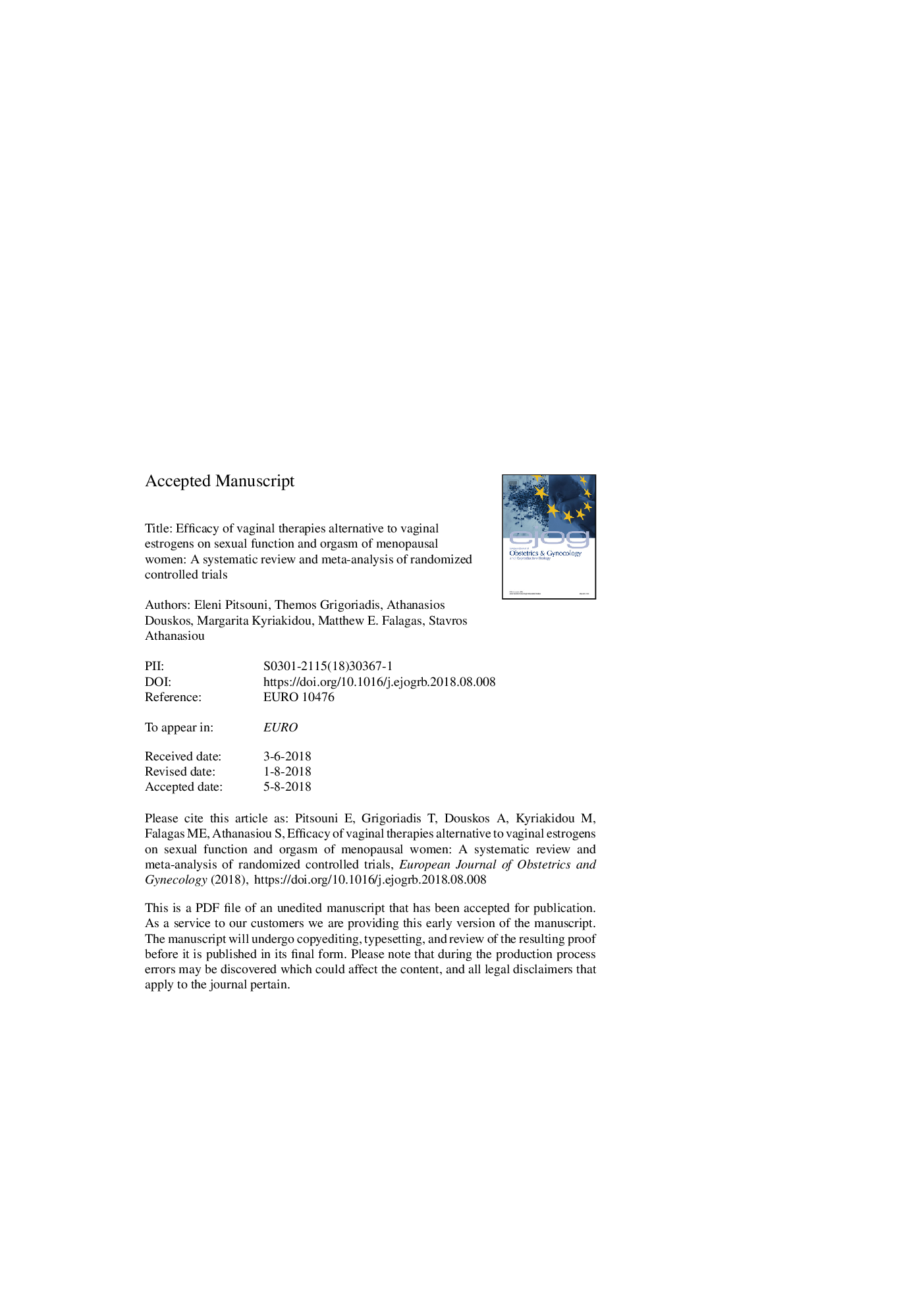| Article ID | Journal | Published Year | Pages | File Type |
|---|---|---|---|---|
| 8777850 | European Journal of Obstetrics & Gynecology and Reproductive Biology | 2018 | 30 Pages |
Abstract
Genitourinary syndrome of menopause (GSM) increases the probability of female sexual dysfunction (FSD). The aim of the current study is to systematically assess data regarding sexual function and use of vaginal therapies, alternative to vaginal estrogens (VE), in menopausal women with GSM. PubMed, Scopus and Cochrane Library were searched (May-September 2017) using combination keywords: “dyspareunia and vaginal therapy”, “sexual function and vaginal therapy”, “orgasm and vaginal therapy”, “vaginal atrophy” and “genitourinary syndrome of menopause”. Eligible studies were RCTs focusing on the use of vaginal therapies, alternative to VE, in menopausal women. These studies were written in English language and published in peer-reviewed journals with impact factor. Assessment of risk of bias was performed using the Cochrane Risk of Bias Tool. Outcomes involved dyspareunia, vaginal dryness, orgasm and all parameters of sexual function. Twenty-nine RCTs including 3689 menopausal women, were included. Vaginal therapies, alternative to VE included non-hormonal (vaginal laser, lubricants/moisturizers, phytoestrogens and lidocaine) and hormonal ones (Dehyadroapiandrosterone (DHEA), testosterone and oxytocin). Dyspareunia and/or vaginal dryness were assessed in 72% of the articles, while the FSD and orgasm in 45% and 28% of articles, respectively. Dyspareunia and vaginal dryness improved in all relevant studies. Sexuality scores of lubricants were inferior to estrogens [3 studies, nâ=â138, standardized mean difference (smd) -0.64, (95%CI â1.1, â0.2)]. Orgasm domain was the same for the DHEA 0.5% and placebo (2 studies, nâ=â663, smd 1.29 (95% â0.47, 3.05), I2:90%). Sexual satisfaction and sexuality score were the same when testosterone was compared or added to estrogen therapy (2 studies, nâ=â99, smd 0.16 (95%CIâ0.23,0.56), I2:12% and 2 studies (nâ=â87), smd 0.20 (95%CI-0.23,0.62), I2:0%, respectively. Available data are not adequate to provide counseling by the physicians in menopausal women regarding the efficacy of vaginal therapies as an alternative to estrogens, on all parameters of sexual function.
Keywords
Related Topics
Health Sciences
Medicine and Dentistry
Obstetrics, Gynecology and Women's Health
Authors
Eleni Pitsouni, Themos Grigoriadis, Athanasios Douskos, Margarita Kyriakidou, Matthew E. Falagas, Stavros Athanasiou,
